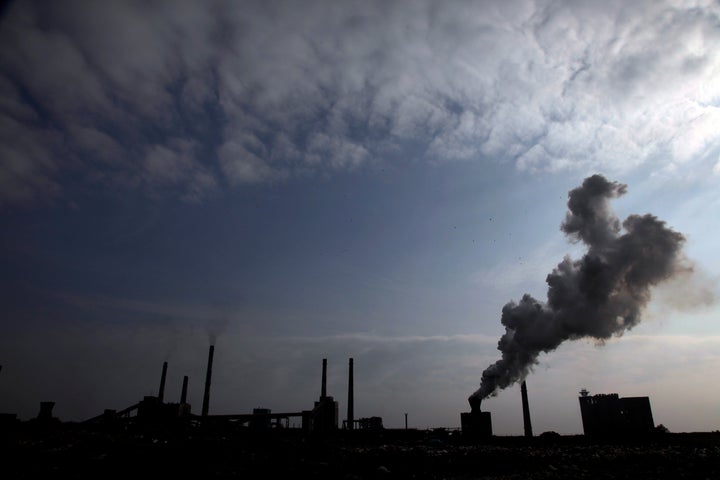
It's well known that poor diet and physical inactivity are the main contributors to obesity -- an epidemic which afflicts 17 percent of America's children. But why would the rate be higher -- closer to 25 percent according to a new study conducted by the Columbia University Center for Children's Environmental Health -- among children living in inner-city neighborhoods? It seems particularly strange for a city like New York where most of us walk or take public transportation to get about. Could there be other factors to consider?
Indeed, the Center's study strongly suggests that a common urban air pollutant -- Polycyclic Aromatic Hydrocarbons, PAH for short -- could be playing a role. PAHs are released into the air from the burning of coal, diesel, oil and gas, or other organic substances such as tobacco. Trucks and buses are the worst polluters as they use diesel fuel, not gasoline.
Previous research at the Center indicates that exposure to PAHs poses a number of hazards. Prenatal exposure to PAH can negatively affect childhood IQs and is linked to anxiety, depression and attention problems in young children. Also PAH are known carcinogens and has been shown to disrupt the body's endocrine system -- which is instrumental in regulating mood, growth and development, metabolism, sexual function and reproductive processes.
So is it the PAHs' effect on the endocrine system and its control of metabolism that links the pollutant to obesity? Possibly. According to studies on mice, exposure to PAH causes gains in fat mass. Corroborating evidence from cell culture studies have shown exposures to PAH prevent normal lipolysis, the process by which fat cells shed lipids and shrink in size.
These earlier studies correlate well with the findings from the new "street-science" study, which was published earlier this month in the American Journal of Epidemiology. In this new study, researchers recruited 702 non-smoking pregnant women who all lived in areas in Northern Manhattan or the South Bronx. Over the course of two days during their third trimester, they wore a small backpack equipped to continually sample the surrounding air; at night they placed it near their bed. What the researchers found was that children of women exposed to high levels of PAH during pregnancy were nearly twice as likely (1.79 times) to be obese at age 5, and more than twice as likely (2.26 times) to be obese at age 7, compared with children of mothers with lower levels of exposure. The 7 year-olds whose mothers were in the highest exposure group had, on average, 2.4 lbs. more fat mass than children of mothers with the least exposure.
Interestingly, though obesity is clustered among poorer families, and New York City has big pockets of poverty, Andrew G. Rundle, Dr. P.H., the study's lead author and a professor of epidemiology at Columbia's Mailman School of Public Health, found the impact of PAH on risk of obesity was not influenced by household income or neighborhood poverty. His team also ruled out the influence of cigarette smoke in the household, another sources of PAHs.
Rundle offers this explanation for the role PAHs may play: "Obesity is a complex disease with multiple risk factors... For many people who don't have the resources to buy healthy food or don't have the time to exercise, prenatal exposure to air pollution may tip the scales, making them even more susceptible to obesity."
Obesity rates are higher among African American and Hispanic children, Rundle notes. "So while NYC has many advantages in terms of walkability and parks," he explains, "It also has many residents traditionally thought to be at higher risk."
Fortunately, there are ways to reduce PAH exposure in your community. As noted above, certain fuels release more of the pollutant than others, so working with your city or town to require trucks, buses and building furnaces to switch to cleaner fuels or be equipped with the latest emission controls could make a big difference. Efforts on the part of community action groups in New York City to take diesel buses off the streets and retrofit oil furnaces so they burn cleaner fuel have improved air quality here.
Also, you can join the many cities and towns that have passed anti-idling rules prohibiting trucks and buses from idling their engines when they stop for more than a few minutes. And consider including a clause like we have in NYC, which not only allows agents of the Department of Parks and Recreation and the Department of Sanitation to issue idling summonses, appearance tickets and violation notices, but gives citizens the ability to report truck violations.
Cleaner air, just like healthier diet and access to parks and recreation areas, is our ticket to a smarter, healthier, more productive life for our children. We can all help to make our neighborhoods safe and healthy for our children.